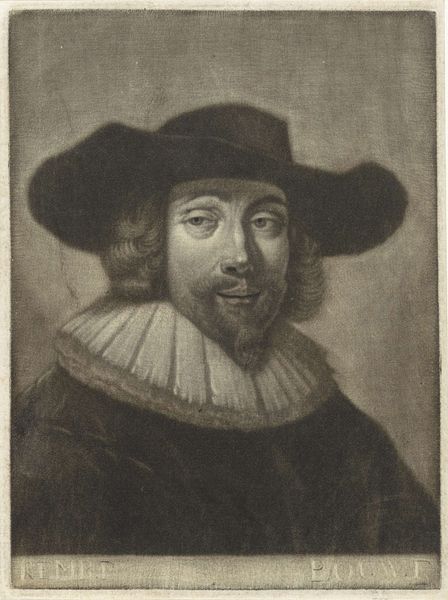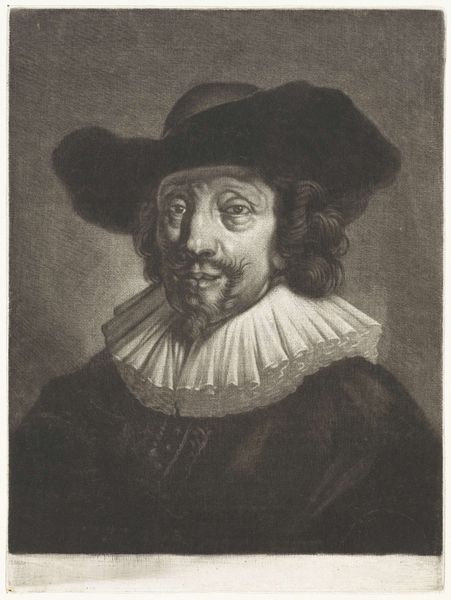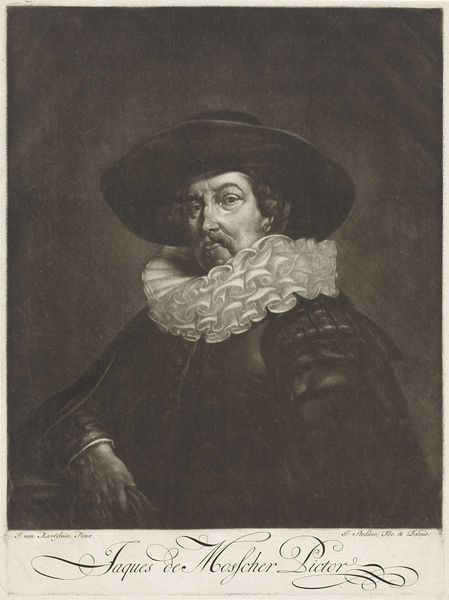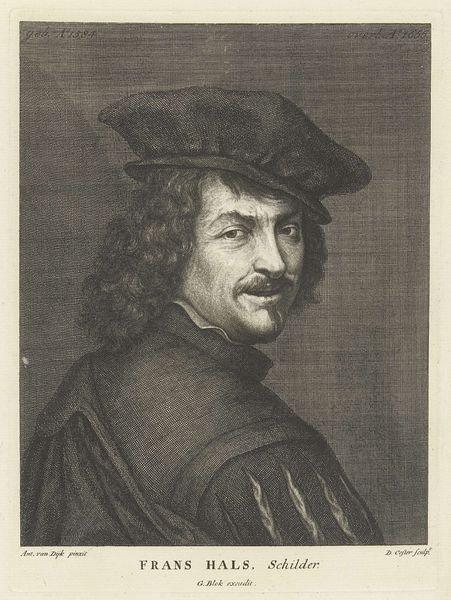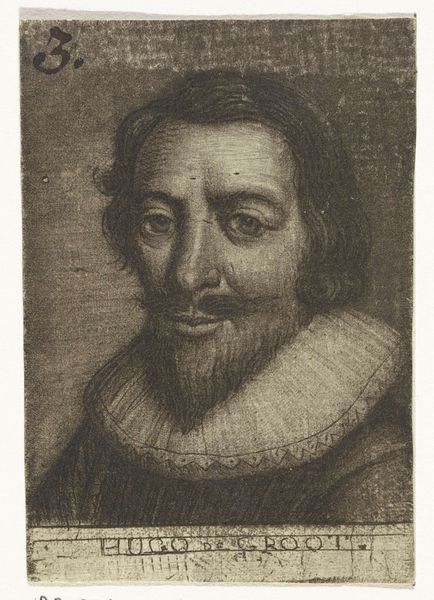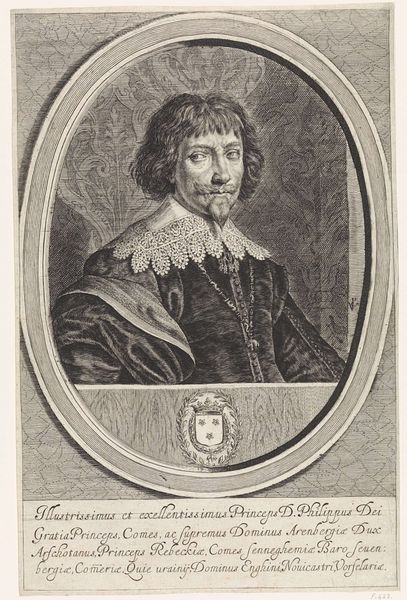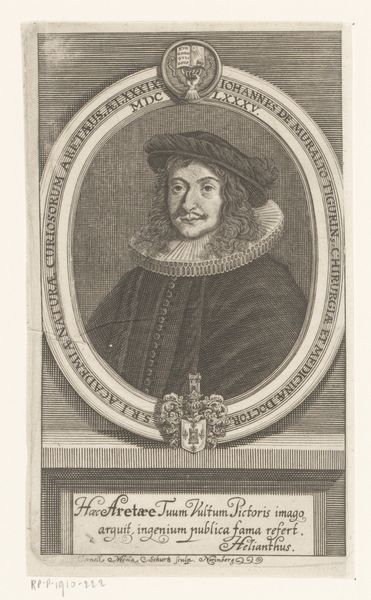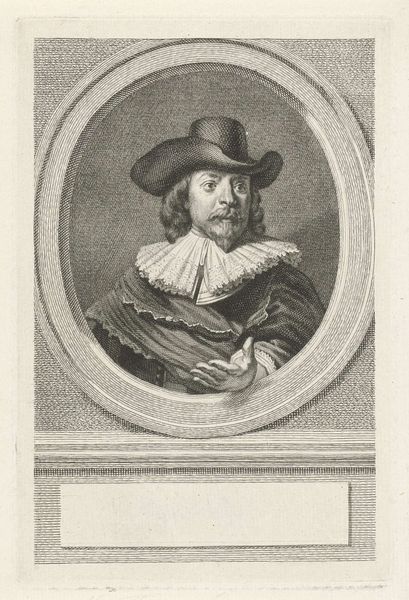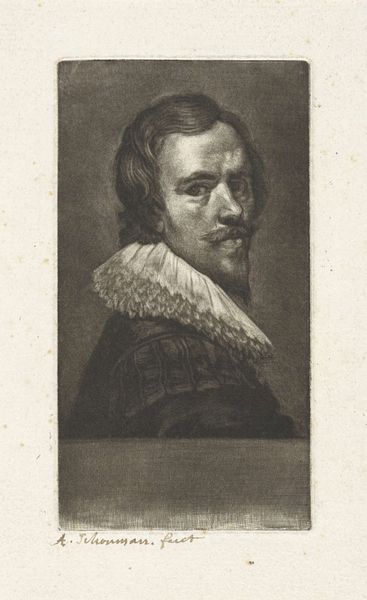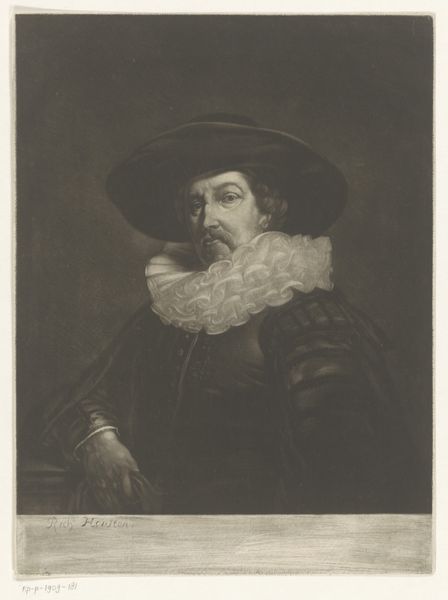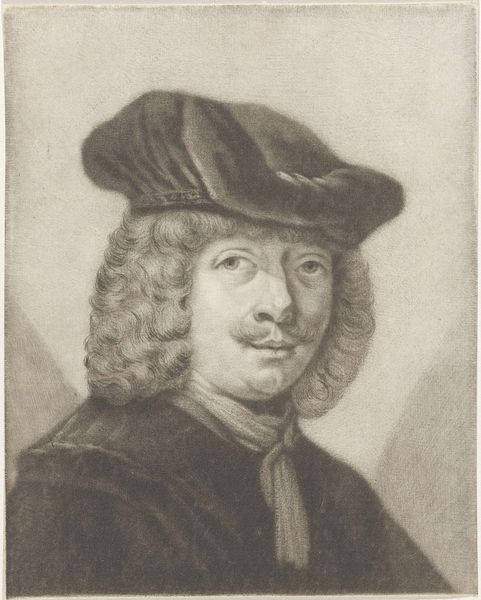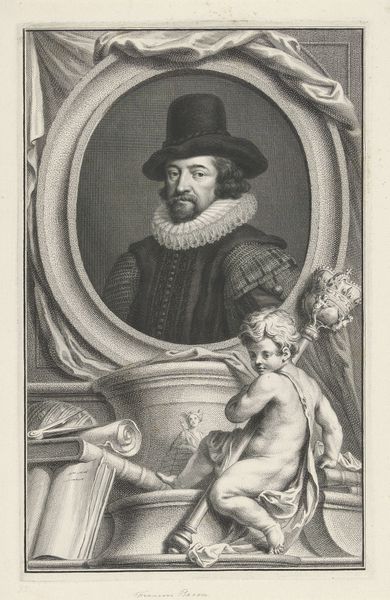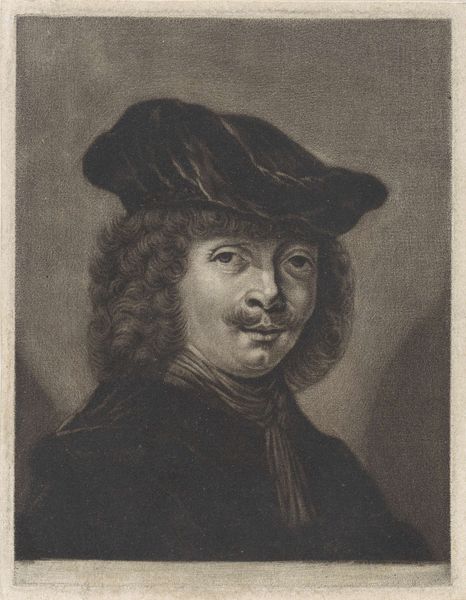
Dimensions: height 140 mm, width 104 mm
Copyright: Rijks Museum: Open Domain
Pieter Louw made this small etching of a man in a hat and ruff sometime in the 18th century. The cultural and institutional history of portraiture is central to understanding this image. By the 1700s, portraiture in the Netherlands was an established genre, closely associated with the economic power of the Dutch middle class, who had money to spend on commissioning likenesses of themselves. Louw was born in the Netherlands, so his art and life were shaped by the legacy of the Dutch Golden Age. His printmaking reflects the period's focus on capturing individual identity through careful observation. Looking at how artists like Louw chose to represent their subjects helps us understand the social values of the time. To fully grasp the historical context, we might consult period writings and visual records to understand the conventions of portraiture and how they were evolving. By understanding the social and cultural context, we can appreciate how art reflects and shapes its time.
Comments
No comments
Be the first to comment and join the conversation on the ultimate creative platform.
